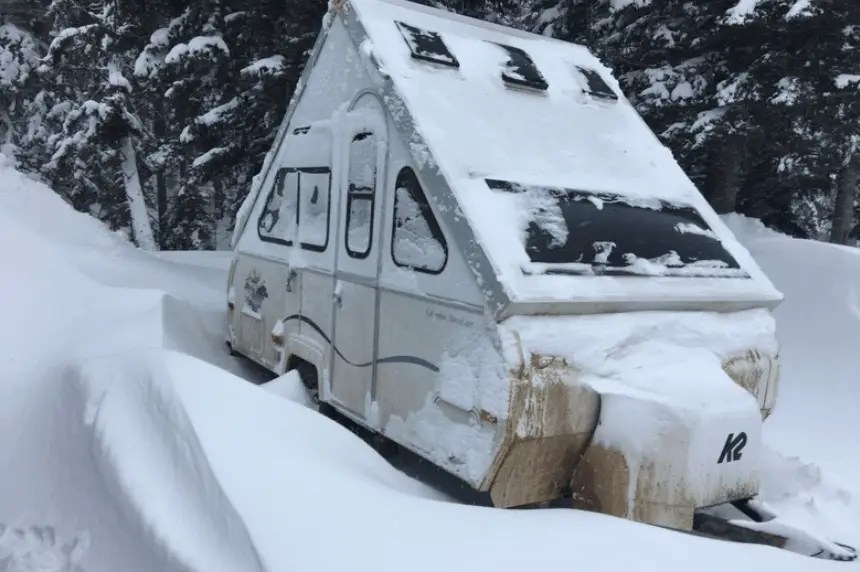Cozy Camper: Your Guide to Winterizing Your Travel Trailer
Dreaming of sunny skies and open roads? Before you tuck your travel trailer away for the winter, there's one crucial task: winterizing. Properly preparing your RV for storage can save you from costly repairs and headaches come springtime. Think of it as giving your trusty travel companion a cozy blanket for the cold months.
Winterizing a travel trailer essentially involves protecting its plumbing system from freezing temperatures, which can cause pipes to burst and wreak havoc. It also involves safeguarding other components from damage due to moisture, pests, and general disuse. This guide will walk you through the steps to ensure your camper emerges from hibernation ready for new adventures.
The concept of winterizing RVs likely emerged alongside the rise in popularity of recreational vehicles in the mid-20th century. As more people embraced the nomadic lifestyle, the need to protect these investments from harsh weather became apparent. Early methods may have been simpler, but the core principles remain the same: prevent freezing, minimize moisture, and protect from pests.
The importance of proper winterization can't be overstated. Burst pipes are a common and expensive problem, often requiring significant repairs. Beyond plumbing, neglecting winterization can lead to mold and mildew growth, attracting unwanted guests and creating unpleasant odors. Battery damage, tire deterioration, and even structural issues can also arise from improper storage.
Before diving into the how-to, let’s define "winterizing." It's more than just draining the water; it’s a comprehensive process that includes protecting every system in your travel trailer from potential winter damage. This includes plumbing, appliances, the exterior, and even the interior.
One of the most significant benefits of winterizing your travel trailer is preventing costly repairs. A burst pipe can lead to thousands of dollars in damage, not to mention the inconvenience and delay in starting your next camping season. By taking preventative measures, you're protecting your investment and ensuring a smoother start to spring.
Another benefit is extending the lifespan of your RV. By protecting it from the elements, you're reducing wear and tear and ensuring it stays in top condition for years to come. Think of winterizing as a form of preventative maintenance, similar to regular oil changes for your car.
Finally, proper winterization provides peace of mind. Knowing that your camper is safe and sound through the winter allows you to relax and focus on planning your next adventure, rather than worrying about potential problems.
Action Plan: The winterization process involves several key steps. First, you'll need to drain all water from the plumbing system, including the fresh water tank, gray water tank, and black water tank. Next, you'll introduce antifreeze into the system to protect pipes and fixtures from freezing. Other important steps include cleaning the interior, covering vents, and protecting tires from sun and snow.
Checklist:
Drain all water tanks
Bypass the water heater
Introduce RV antifreeze
Clean and sanitize the interior
Cover vents and openings
Protect tires
Step-by-Step Guide:
1. Drain all water tanks (fresh, gray, black)
2. Bypass the water heater.
3. Connect a winterizing kit to the water pump intake.
4. Pump antifreeze through all faucets, shower, and toilet until pink antifreeze appears.
5. Add antifreeze to drain traps.
Advantages and Disadvantages of Winterizing
| Advantages | Disadvantages |
|---|---|
| Prevents costly repairs | Requires time and effort |
| Extends RV lifespan | Cost of materials (antifreeze, etc.) |
| Peace of mind |
Best Practices: Use RV-specific antifreeze, not automotive antifreeze. Ensure all water is drained before introducing antifreeze. Inspect seals and caulking around windows and doors and repair as needed. Cover your RV with a breathable cover to protect it from the elements. Store in a dry, level location.
Frequently Asked Questions:
Q: What type of antifreeze should I use? A: RV-specific, non-toxic antifreeze.
(Additional FAQs addressing common winterizing questions)
Tips and Tricks: Use a compressor to blow out excess water from lines after draining. Add a dehumidifier inside the RV to minimize moisture. Place mouse traps or deterrents inside to prevent infestations.
Winterizing your travel trailer is an essential task for any RV owner. It safeguards your investment, prevents costly repairs, and provides peace of mind during the off-season. By following this guide, you can ensure your camper is ready for new adventures when the warm weather returns. So, take the time to properly prepare your RV for winter and enjoy countless happy camping trips for years to come. Remember, a little preventative maintenance now saves a lot of headaches later. Don’t wait until the first frost – get started today! Happy camping!
Unlocking hopkinsville ky your guide to navigation and exploration
Navigating public records in rhein erft kreis
Luiz lurid luminescent unveiling the power of words beginning with lui














